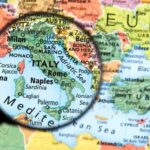Italy, known for its stunning landscapes, rich history, and delectable cuisine, has always been a dream destination for many travelers. However, as the world continues to grapple with the COVID-19 pandemic, travel to Italy has undergone significant changes. Understanding and adhering to the new travel restrictions is essential for anyone planning a trip to this beautiful country.
In this article, we will provide you with a comprehensive guide on the current travel situation in Italy. From entry requirements to transportation restrictions and accommodation concerns, we aim to equip you with all the necessary information to plan a safe and enjoyable trip.
The COVID-19 landscape in Italy is ever-evolving, with measures being implemented and revised regularly to control the spread of the virus. It is crucial that travelers stay informed about these updates to ensure compliance and avoid any inconvenience during their trip. By understanding the documentation and tests required for entry into Italy, travelers can plan their journeys accordingly and ensure a smooth arrival process.
Travel restrictions are not limited to air travel alone; they extend to train travel as well. Navigating these restrictions and guidelines when traveling by train is crucial for those who wish to explore different regions of Italy without relying on flights. Additionally, road trips have become increasingly popular due to concerns surrounding public transportation. Tips for road trips in Italy will be discussed along with potential restrictions that may be encountered.
As you navigate this article, keep in mind that while travel restrictions may present some challenges, they also provide an opportunity for alternative experiences. We will explore how popular tourist destinations are adapting to these restrictions while delving into off-the-beaten-path options that offer safe and memorable experiences.
It’s important to remember that traveling during restrictions requires careful consideration of personal circumstances and safety precautions. Is it worth it? That’s a question we’ll delve into in our concluding section.
But first things first – let’s dive into understanding Italy’s new travel restrictions.
Overview of the Current Travel Situation in Italy
The COVID-19 pandemic has drastically changed the travel landscape worldwide, and Italy is no exception. As one of the hardest-hit countries during the early stages of the pandemic, Italy has implemented strict travel restrictions to help curb the spread of the virus. In this section, we will provide an overview of the current travel situation in Italy and explore how COVID-19 has impacted the country’s tourism industry.
COVID-19 Situation in Italy
Italy was one of the first countries outside of China to experience a major outbreak of COVID-19. The government implemented stringent measures to control the spread of the virus, including nationwide lockdowns and travel restrictions. The efforts were successful in significantly reducing infection rates and saving lives.
As the situation improved, Italy began gradually easing its restrictions and reopening for tourism. However, with new variants emerging and fluctuating infection rates, travel regulations are subject to change at any time. It is crucial for travelers to stay informed about the current COVID-19 situation before planning a trip to Italy.
Travel Restrictions and Entry Requirements
Currently, entry into Italy is restricted from certain countries with high infection rates or specific COVID-19 variants. Travelers arriving from these designated countries may face entry bans or mandatory quarantines upon arrival. It is essential for travelers to check whether their home country is on Italy’s list of restricted countries before making any plans.
In addition to travel restrictions, visitors must also meet specific entry requirements when traveling to Italy. These requirements include presenting a negative COVID-19 test result taken within a specified timeframe prior to arrival or undergoing testing upon arrival at Italian airports or border crossings. Some exceptions apply to vaccinated individuals or those who have recently recovered from COVID-19.
It is important for travelers to understand these entry requirements beforehand and ensure they have all necessary documentation in order to enter Italy without any issues.
As you plan your trip to Italy, it is crucial to stay updated on the latest travel restrictions and entry requirements. The COVID-19 situation is constantly evolving, and it is essential for travelers to be flexible and adapt their plans accordingly. By staying informed and following the necessary precautions, you can safely navigate the current travel landscape in Italy and have an enjoyable experience.
The Latest Updates on Entry Requirements
With the ongoing COVID-19 pandemic, Italy has implemented new entry requirements for travelers to ensure the safety and well-being of its residents and visitors. Understanding these entry requirements is crucial before planning a trip to Italy. This section explores the latest updates on entry requirements, including the necessary documentation and tests needed before arrival.
Documentation Required
Before traveling to Italy, it is important to have certain documents in order. Firstly, all travelers are required to fill out a self-declaration form stating their purpose of travel, accommodation details, and contact information. This can be done online or on paper forms available at the airport or other points of entry.
Additionally, a negative COVID-19 test result is mandatory for all travelers aged 6 years and above. The test must be taken within 72 hours prior to arrival.
It is also advisable to have travel insurance that covers COVID-19 related expenses, as well as a valid passport with at least six months’ validity beyond the planned date of departure from Italy. These documents should be readily accessible during the entire duration of your stay in Italy.
Testing Requirements
In addition to providing a negative COVID-19 test result prior to arrival, some passengers may be subject to rapid antigen tests or molecular tests upon arrival at Italian airports or other points of entry. These tests will help identify any potential cases among incoming travelers and prevent further spread of the virus.
It is important to note that testing requirements may vary depending on factors such as country of origin, vaccination status, and epidemiological situation in specific regions. Therefore, it is recommended to regularly check official government websites or consult with relevant authorities for updated information on testing requirements before your trip.
Understanding and adhering to these entry requirements will ensure a smooth travel experience while prioritizing the safety and well-being of all individuals involved. It is crucial to stay informed about any changes or updates in order to make necessary adjustments to your travel plans if needed.
Traveling by Air
Italy has implemented various restrictions and safety measures at airports to ensure the well-being of travelers during the COVID-19 pandemic. Navigating these restrictions is crucial for those planning to travel by air. Here are some key things to know:
- Documentation Requirements: Before traveling to Italy, it is essential to have the necessary documentation in place. This includes a negative COVID-19 test result taken within a specified timeframe before arrival, depending on your country of origin. It is also important to fill out any required health declaration forms, which may be available online or provided at the airport.
- Temperature Checks and Health Screening: Upon arrival at Italian airports, passengers can expect temperature checks and health screenings. Increased sanitation measures, such as hand sanitizing stations and regular cleaning of frequently touched surfaces, are likely to be observed throughout the airport premises.
- Social Distancing and Mask Mandates: It is important to adhere to social distancing guidelines while at airports in Italy. This means maintaining a distance of at least one meter from other individuals whenever possible. Additionally, wearing masks in all public areas of the airport is mandatory.
- Reduced Services: Some services within airports may be limited or temporarily unavailable due to the ongoing pandemic. This could include reduced dining options, limited access to lounges, and changes in duty-free shopping procedures.
- Quarantine Requirements: Depending on your country of origin or recent travel history, you may be subject to quarantine upon arrival in Italy. It is important to stay informed about current quarantine regulations and plan your trip accordingly.
Traveling by air to Italy during the COVID-19 pandemic requires careful planning and adherence to safety protocols. By familiarizing yourself with the documentation requirements, understanding health screening processes, following social distancing guidelines, being prepared for reduced services, and staying up-to-date with quarantine regulations, you can navigate airport restrictions with greater ease and peace of mind.
Traveling by Train
Italy is known for its efficient and extensive train network, making it a popular choice for travelers exploring the country. However, with the current travel restrictions due to COVID-19, train travel in Italy has undergone certain changes and guidelines. If you plan to travel by train in Italy, here are some important things you need to know:
Reduced Capacity
Due to social distancing measures, trains in Italy are operating at reduced capacity. This means that there are fewer seats available on each train, and it is advisable to book your tickets in advance to secure your spot. Many trains also require mandatory seat reservations, so it is important to check the specific guidelines of the train operator before your journey.
Face Masks
Just like other public transportation modes, wearing a face mask is mandatory while traveling on trains in Italy. Make sure to bring an adequate supply of masks for your journey and follow the instructions provided by the train staff.
Sanitization Measures
Train operators have implemented enhanced cleaning and sanitization protocols on their trains and at stations. Commonly touched surfaces such as handrails and door handles are regularly disinfected, providing a safer environment for passengers.
Social Distancing
Passengers are required to maintain a safe distance from each other while onboard and at station platforms. Train operators may have marked seats or designated areas where passengers should sit or stand to ensure proper distancing.
Ticket Validation
To minimize physical contact between passengers and staff, several train operators in Italy have introduced contactless ticket validation systems. This allows passengers to validate their tickets without handing them over or coming into close proximity with staff members.
Cancellations and Refunds
It is important to familiarize yourself with the cancellation and refund policies of the train operator you choose. Due to the uncertain nature of travel during these times, it is best to opt for flexible tickets or purchase travel insurance that covers trip interruptions or cancellations.
Traveling by train in Italy can still be a convenient and enjoyable way to explore the country, despite the restrictions in place. By following these guidelines and staying updated on the latest information from train operators, you can have a safe and smooth journey as you traverse the beautiful landscapes of Italy.
Traveling by Car
Italy is renowned for its picturesque landscapes, charming towns, and stunning coastlines, making it an ideal destination for road trips. Traveling by car allows visitors to explore the hidden gems of the country at their own pace and provides a sense of freedom and flexibility. However, before embarking on a road trip in Italy, it is important to be aware of potential restrictions and guidelines that may affect your journey.
Potential Restrictions
Italian authorities have implemented certain measures and restrictions in response to the COVID-19 pandemic. It is crucial to stay updated on the latest travel advisories and regulations imposed by the Italian government or specific regions within Italy before planning your road trip.
One potential restriction that travelers may encounter is limited access to certain areas or regions. Depending on the current COVID-19 situation, specific provinces or cities might enforce localized lockdowns or entry restrictions. It is advisable to check with local authorities or consult reliable sources such as official government websites for any updates regarding restricted areas beforehand.
Tips for Road Trips
Despite these limitations, road trips in Italy can still be enjoyable and memorable experiences. Here are some tips to consider:
- Plan your route: Research and plan your itinerary in advance, taking into account any potential restrictions or closures along the way. This will help you avoid unnecessary detours or disappointments during your trip.
- Use reliable navigation tools: Utilize GPS devices or smartphone applications with up-to-date maps and traffic information to ensure smooth navigation throughout your journey.
- Familiarize yourself with driving rules: Before hitting the road in Italy, familiarize yourself with local driving regulations such as speed limits, signage, parking rules, and toll roads. This will ensure a safe and hassle-free experience.
- Carry essential documents: Make sure you have all necessary documents readily available while driving in Italy. These may include a valid driver’s license (international driver’s permit if required), vehicle registration papers, and proof of insurance.
- Stay informed about parking options: Parking can be a challenge in busy Italian cities. Research the parking facilities available along your route or at your intended destinations to avoid any issues or fines.
- Follow health and safety guidelines: Just like in other public spaces, it is important to adhere to COVID-19 health and safety protocols while on the road. This includes wearing face masks, practicing social distancing when interacting with others outside your travel bubble, and maintaining good hygiene practices.
While traveling by car offers a certain level of freedom and flexibility, it is essential to stay informed about potential restrictions and regulations that may affect your road trip in Italy. By planning ahead and following the recommended tips, you can enjoy a safe and memorable journey through the beautiful landscapes of this enchanting country.
Accommodation Concerns
As travel restrictions continue to evolve in Italy, it is important for travelers to understand the restrictions and precautions in place when it comes to accommodations. Whether staying at hotels or vacation rentals, there are certain guidelines that need to be followed to ensure the safety of both guests and staff.
Hotels
– Many hotels in Italy have implemented enhanced cleaning protocols to maintain a safe environment for guests. This includes more frequent disinfection of common areas, such as lobbies, elevators, and hallways.
– Hand sanitization stations can be found throughout the hotel premises for guests to use.
– It is common for hotels to enforce social distancing measures in their facilities, such as reducing capacity in restaurants and public spaces.
– Some hotels may require guests to wear masks in shared spaces where social distancing is not possible.
– Contactless check-in and check-out procedures have become more common, allowing guests to minimize contact with staff.
Vacation Rentals
– Vacation rentals, such as apartments or villas, are a popular alternative for travelers seeking more privacy during their stay. However, it is essential to be aware of any specific restrictions or guidelines set by the rental provider.
– Similar to hotels, vacation rentals often implement enhanced cleaning procedures between guest stays.
– Guests should consider bringing their own personal protective equipment, such as hand sanitizer and disinfecting wipes.
– It is advisable to communicate with the rental provider prior to arrival regarding any additional precautions they may have in place.
– Travelers should also familiarize themselves with local regulations or curfews that may impact their stay at a vacation rental.
Regardless of the type of accommodation chosen, it is crucial for travelers to follow these guidelines and adhere to any specific restrictions set by the establishment. By doing so, individuals can contribute towards ensuring a safe and enjoyable experience for themselves and others during their stay in Italy.
Dining and Entertainment
Italy is well-known for its exquisite cuisine, vibrant nightlife, and rich cultural heritage. However, the ongoing COVID-19 pandemic has significantly impacted the dining and entertainment scene in the country. This section will explore how restrictions have impacted restaurants, bars, and cultural activities in Italy.
Restaurants in Italy have had to adapt to new regulations to ensure the safety of both staff and customers. Social distancing measures are in place, with tables being placed at least one meter apart. Some restaurants have also implemented a reservation-only policy to control crowd sizes. Additionally, wearing masks is mandatory for both staff and customers when not seated at a table.
Bars and clubs have faced even stricter regulations, as they are considered high-risk venues for spreading the virus. Many bars have had to adjust their business models to prioritize outdoor seating or takeaway services. In regions with higher infection rates, some bars and clubs have been temporarily closed or prohibited from serving alcohol after a certain time.
Cultural activities such as museums, theaters, and cinemas have also been affected by restrictions. Capacity limits are enforced to maintain social distancing, and visitors may be required to book tickets in advance. Interactive exhibits or hands-on activities may be temporarily suspended or modified to minimize contact between individuals.
| Restriction | Description |
|---|---|
| Social Distancing Measures | Tables must be placed at least one meter apart. |
| Reservation-only Policy | Some restaurants require reservations to manage crowd sizes. |
| Mandatory Mask-wearing | Masks must be worn by staff and customers when not seated at a table. |
| Outdoor Seating or Takeaway Services | Bars have shifted to outdoor seating or takeaway services to minimize indoor gatherings. |
| Capacity Limits | Cultural venues enforce capacity limits and may require advance booking of tickets. |
While the dining and entertainment experience in Italy has certainly been affected by restrictions, it is important to note that these measures are in place to protect public health. Visitors are encouraged to familiarize themselves with the latest guidelines and regulations before visiting restaurants, bars, or cultural venues.
It is also advisable to check for any regional variations in restrictions and plan accordingly. Despite the challenges posed by the pandemic, Italy still offers a wealth of culinary delights, vibrant nightlife (albeit modified), and captivating cultural experiences for those willing to navigate the restrictions.
Exploring Popular Tourist Destinations
Italy is known for its iconic cities and attractions that draw millions of tourists each year. However, with the COVID-19 pandemic still ongoing, many of these popular destinations have implemented restrictions to ensure the safety of both locals and visitors. It is important for travelers to be aware of these restrictions before planning their trip.
One of the most famous cities in Italy is Rome, home to historical sites such as the Colosseum and the Vatican City. Visitors to Rome must adhere to certain restrictions, including mandatory mask-wearing in public spaces and maintaining social distancing. The number of visitors allowed in popular tourist spots may also be limited to avoid overcrowding. Additionally, some attractions may require advance reservations or timed entry tickets in order to control capacity.
Another popular destination in Italy is Florence, known for its Renaissance art and architecture. Like other cities in Italy, Florence has implemented similar safety measures. Visitors are required to wear masks at all times when outside their accommodation and must maintain a safe distance from others. Museums and galleries in Florence may also have limited capacity and require online booking for entry.
Venice, with its unique canals and gondola rides, is often high on travelers’ bucket lists. However, due to its narrow streets and crowded water taxis, Venice has imposed certain restrictions to prevent the spread of COVID-19. Mask-wearing is mandatory indoors and outdoors, even when social distancing can be maintained. Vaporetto boats may limit the number of passengers they carry at one time, so travelers should plan accordingly.
Overall, it is essential for travelers to research and understand the specific restrictions implemented in each popular destination they plan to visit while traveling in Italy. By familiarizing themselves with these guidelines beforehand, they can ensure a safe and enjoyable experience while exploring iconic cities and attractions throughout the country.
Alternative Travel Options
Traveling during a time of restrictions can be challenging, but it doesn’t necessarily mean that you have to put your travel plans on hold. In fact, it can present an opportunity to explore alternative travel options and discover safe and off-the-beaten-path experiences in Italy. While iconic cities and attractions may have stricter regulations in place, there are still plenty of hidden gems and lesser-known destinations that offer unique experiences while adhering to COVID-19 guidelines.
One alternative travel option is to explore the countryside and smaller towns in Italy. These areas often have fewer crowds and offer a more intimate experience with the local culture. Whether it’s visiting vineyards in Tuscany, relaxing in thermal baths in the Emilia-Romagna region, or exploring the beautiful lakes of Lombardy, there are countless hidden treasures to discover away from the bustling cities.
Another option is to focus on outdoor activities and natural landscapes. Italy is known for its breathtaking scenery, from the stunning Amalfi Coast to the rugged Dolomites. Hiking, biking, and even camping can be great ways to enjoy the country’s beauty while maintaining social distancing. Many national parks are open for visitors and provide opportunities for outdoor adventures.
It’s also worth considering less-traveled regions of Italy that are not as heavily impacted by restrictions. Places like Calabria in the south or Friuli-Venezia Giulia in the northeast offer unique cultural experiences, beautiful coastlines, and delicious cuisine without the large crowds typically found in tourist hotspots. These areas provide a chance to immerse yourself in authentic Italian life while avoiding crowded tourist attractions.
Exploring these alternative travel options allows you to have a memorable experience while still adhering to COVID-19 restrictions. By venturing off the beaten path, you can discover hidden gems, enjoy nature’s beauty, and support local businesses in lesser-known regions of Italy.
| Alternative Travel Options | Safety Measures |
|---|---|
| Explore the countryside and smaller towns | – Fewer crowds – More intimate experience. – Adhering to COVID-19 guidelines |
| Focus on outdoor activities and natural landscapes | – Hiking, biking, camping – National parks open for visitors. – Maintaining social distancing |
| Discover less-traveled regions of Italy | – Calabria, Friuli-Venezia Giulia – Unique cultural experiences. – Beautiful coastlines. – Authentic Italian life without large crowds |
Conclusion
Italy is a beloved destination for tourists from all over the world, known for its rich history, breathtaking landscapes, and delectable cuisine. However, with the ongoing COVID-19 pandemic, travel restrictions have been implemented to ensure the safety and well-being of both residents and visitors. In this article, we have explored the various restrictions and guidelines that have been put in place for travelers to Italy.
It is evident that traveling to Italy during these restrictions requires careful planning and adherence to the entry requirements set by the government. The documentation and tests needed may seem daunting, but they are necessary in order to minimize the risk of spreading the virus. Additionally, navigating airport and train restrictions can add an extra layer of complexity to travel plans.
Accommodation concerns also need to be taken into consideration when planning a trip to Italy, as hotels and vacation rentals have their own set of restrictions and precautions to follow. Likewise, dining and entertainment options may be limited due to capacity restrictions or temporary closures.
However, despite these challenges, traveling to Italy during these restrictions can still be worth it for those who prioritize safety and are willing to adapt their plans. There are alternative travel options available that offer safe and off-the-beaten-path experiences away from crowded tourist destinations. This allows travelers to explore lesser-known areas of Italy while minimizing their exposure to others.
In conclusion, while there are certainly obstacles to overcome when traveling to Italy during these restrictions, many individuals find that the experience is still worthwhile. By staying informed about the latest updates on entry requirements, following safety measures at airports and train stations, being flexible with accommodation options, and seeking out unique travel experiences off-the-beaten-path, visitors can still enjoy everything that makes Italy such a captivating destination.
Ultimately, it is up to each individual traveler to weigh the risks and benefits before making their decision.

I’m a passionate traveler, writer, and Italophile. My fascination with Italy’s history, art, and culture has led me on countless adventures across the Italian landscape. Through “I Live Italy,” I share my love for this extraordinary country and aims to inspire others to explore its boundless beauty.





